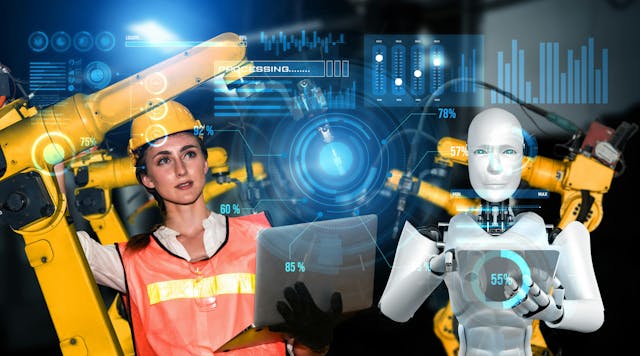Automation has revolutionized the modern manufacturing landscape, enhancing productivity, precision, and efficiency across industries. At the heart of this transformation lies robotics, which is pivotal in streamlining production processes and driving innovation. This article delves into the intricate workings of robotic automation, exploring its evolution, applications, advantages, challenges, and future trends in manufacturing.

Evolution of Automation in Manufacturing
The journey of automation in manufacturing traces back to the Industrial Revolution when mechanization replaced manual labor in factories. Over time, technological advancements led to the development of automated processes and machinery, paving the way for integrating robotics into manufacturing operations.
Impact of Automation on Manufacturing
Automation has revolutionized manufacturing by streamlining production processes, improving product quality, and increasing operational efficiency. By automating repetitive and labor-intensive tasks, robots enable manufacturers to optimize resource utilization, reduce cycle times, and meet the demands of a competitive market landscape.
Key Components of Robotic Automation
Robotic systems consist of various hardware components, including manipulators, actuators, end effectors, and sensors. Manipulators provide the mobility and agility required to perform tasks, while end effectors facilitate environmental interactions. Sensors enable robots to perceive and respond to their surroundings, enhancing safety and precision in operation.
Software Systems and Programming Languages
Robotic automation relies on sophisticated software systems and programming languages to control and coordinate robotic movements. Programming languages such as C++, Python, and ROS (Robot Operating System) enable developers to design custom robot algorithms and behaviour tailored to specific manufacturing tasks and requirements.
Integration with Other Automation Technologies
Robotic automation is often integrated with other automation technologies, including Programmable Logic Controllers (PLCs), Supervisory Control and Data Acquisition (SCADA) systems, and Industrial Internet of Things (IIoT) platforms. Integration enables seamless communication and coordination between robotic systems and other manufacturing equipment, optimizing workflow efficiency and data management.
Applications of Robotics in Manufacturing
Industrial robots are widely used in manufacturing for tasks such as assembly, welding, material handling, and palletizing. These robots are characterized by their high payload capacities, speed, and precision, making them ideal for repetitive and high-volume production environments.
Collaborative Robots (Cobots)
Cobots represent a new paradigm in robotic automation, designed to work collaboratively with humans in shared workspaces. Cobots, unlike traditional industrial robots, have advanced safety features and sensing capabilities, enabling safe and intuitive human-robot interaction. Cobots find applications in tasks such as machine tending, inspection, and small parts assembly.
Specialized Applications
Robotic automation extends beyond traditional manufacturing processes, including specialized applications such as 3D printing, inspection, packaging, and quality control. These applications leverage the versatility and flexibility of robotic systems to perform intricate tasks with accuracy and repeatability.
Advantages of Robotic Automation
Robotic automation enhances productivity and efficiency by automating repetitive tasks, reducing cycle times, and minimizing errors. Robots operate 24/7 with consistent precision, enabling manufacturers to easily meet production deadlines and customer demands.
Enhanced Quality Control and Precision
Robotic automation ensures consistent product quality and precision by minimizing variations and deviations in manufacturing processes. Robots perform tasks accurately and repeatably, resulting in higher-quality products and reduced rework or scrap rates.
Reduction in Labor Costs
By automating labor-intensive tasks, robotic automation reduces the reliance on manual labor and mitigates labor shortages in manufacturing. While initial investment costs may be higher, the long-term savings in labor costs and increased operational efficiency justify the investment in robotic automation.
Challenges and Considerations in Implementing Robotic Automation
The initial investment costs of robotic automation include hardware, software, integration, and training expenses. Manufacturers must carefully evaluate the return on investment (ROI) and total cost of ownership (TCO) to justify the adoption of robotic automation.
Integration Challenges
Integrating robotic automation into existing manufacturing systems and workflows presents compatibility, infrastructure, and workforce readiness challenges. Manufacturers must assess the scalability and flexibility of their operations to ensure seamless integration and minimal disruption to production.
Safety Concerns and Risk Mitigation
Safety is paramount in robotic automation, particularly in collaborative environments where humans and robots interact closely. Manufacturers must implement robust safety protocols, risk assessments, and protective measures to ensure the safety of workers and prevent accidents or injuries.
Future Trends and Innovations in Robotic Automation
The future of robotic automation is driven by emerging technologies such as artificial intelligence (AI), machine learning, and advanced sensing capabilities. These technologies enable robots to adapt to dynamic environments, learn from experience, and perform complex tasks with autonomy and intelligence.
Trends in Collaborative Robotics
Collaborative robotics continues to evolve, with advancements in safety features, human-robot interfaces, and task flexibility. The emergence of lightweight and mobile cobots expands the scope of collaborative applications, enabling robots to assist workers in diverse industries and environments.
Conclusion
Robotic automation represents a paradigm shift in modern manufacturing, empowering businesses to optimize productivity, enhance quality, and drive innovation. By leveraging the capabilities of robotics, manufacturers can overcome challenges, capitalize on emerging trends, and stay competitive in a rapidly evolving global market. As the automation journey in manufacturing continues, the role of robotics will remain central to shaping the industry’s future and driving sustainable growth and prosperity. Explore a robot website for more insights and solutions.
This comprehensive exploration of robotic automation offers valuable insights and practical guidance for manufacturers seeking to harness the transformative power of automation in their operations. Embrace the possibilities of robotic automation and embark on a journey of innovation and excellence in manufacturing.